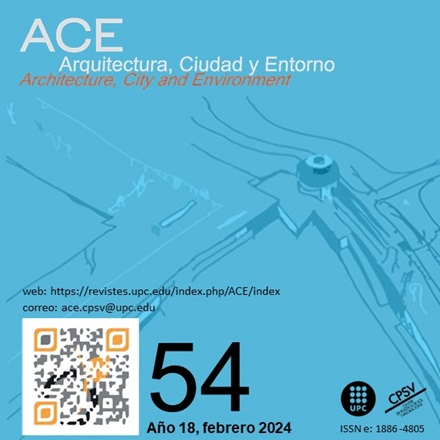A Country of Provinces or Non-Metropolitan Cities? COVID-19 as a Case Study to Understand the Dynamics of Cities in Peru
DOI:
https://doi.org/10.5821/ace.18.54.12075Keywords:
medium-sized cities, comparative analysis, pandemic, data generationAbstract
While the literature does not define a single way of identifying and delimiting cities, one of the most widely accepted methodologies is to combine morphological and functional criteria, leaving aside administrative boundaries. In Peru, these boundaries are ordered from smallest to largest by districts, provinces and regions, and both academia and public institutions in charge of generating data and/or analyzing cities assume that all cities outside the capital, Lima and Callao, can be treated as provinces or regions. In parallel, since the emergence of the COVID-19 pandemic, several studies have shown that it is a phenomenon affected by socioeconomic factors widely studied in urban settings. In this regard, this research aims to use COVID-19 mortality data to compare the situation in ninety Peruvian cities and the provinces to which they belong. Its usefulness lies in evaluating the importance of a proper definition of non-metropolitan cities in Peru to open the way for a discussion on the generation of data on them and the consequent adaptation of existing urban planning and management policies. The results show that in most of the cities analyzed, the mortality rate is higher than that of the province to which they belong, and that the conditions of the capital city may be overestimated when carrying out analyses that do not consider a proper definition of the rest of the country's cities.
Downloads
Published
Issue
Section
License
| INTELECTUAL PROTECTION CRITERIA |
At this moment, it is count with the "Oficina Española de Patentes y Marcas", while global protection it is being processed by the World Intelectual Property Organization (OMPI/WIPO). Nevertheless the International Standard Serial Number Office (ISSN) has given the following numbers ISSN: 1886-4805 (electronic version) and 1887-7052 (paper version). All articles will be peer reviewed, using double blind reviewing. |
| COPYRIGHT |
The article contents and their comments are authors exclusive liability, and do not reflect necessarily the journal editor commitee's opinion. All ACE published works are subject to the following licence CC BY-NC-ND 3.0 ES http://creativecommons.org/licenses/by-nc-nd/3.0/es/ It implies that authors do not hold nor retain the copyright without restrictions but only those included in the licence. |


































